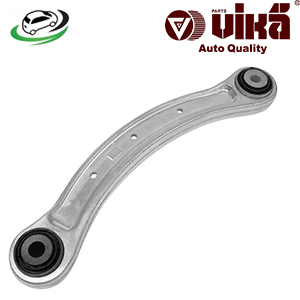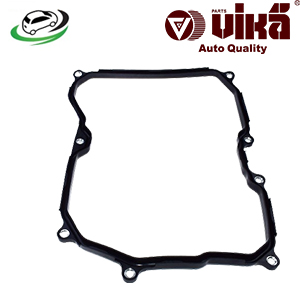-15%
Get Transmission Oil Pan Gasket Audi TT MKI FWD 180HP/VW Beetle 1.8T Gen3/VW Beetle 2.5L/VW Passat B7/B6/Jetta V/V1 09G321370
The transmission oil pan gasket is a crucial component of a vehicle’s transmission system, serving as a seal between the transmission oil pan and the transmission case. This gasket plays an essential role in maintaining proper fluid levels and ensuring the smooth operation of the transmission. Here’s an in-depth exploration of the transmission oil pan gasket, covering its construction, function, benefits, common issues, signs of failure, and maintenance.
Construction and Function of a Transmission Oil Pan Gasket
Construction:
- Materials:
- Rubber: Most transmission oil pan gaskets are made from high-quality rubber, which offers flexibility and resistance to temperature changes.
- Fiberglass: Some gaskets incorporate a fiberglass material to enhance durability and provide additional resistance to high temperatures and pressure.
- Composite Materials: Modern gaskets may use composite materials that combine rubber, cork, or other substances to offer a balance of flexibility and strength.
- Design:
- Shape and Size: The gasket is designed to match the shape and size of the transmission oil pan, providing a precise seal. It often features a flat, rectangular or irregular shape with cutouts for bolt holes.
- Sealant: Many gaskets have an adhesive or sealant layer to ensure a tight bond with the transmission oil pan and the transmission case.
Function:
- Fluid Containment:
- Preventing Leaks: The primary function of the transmission oil pan gasket is to create a seal between the oil pan and the transmission case, preventing transmission fluid from leaking out.
- Maintaining Fluid Levels: By preventing leaks, the gasket ensures that the transmission fluid level remains consistent, which is crucial for proper transmission operation.
- Contaminant Protection:
- Blocking Debris: The gasket also acts as a barrier to prevent dirt, debris, and contaminants from entering the transmission, which can cause damage and reduce the lifespan of transmission components.
- Heat and Pressure Resistance:
- Thermal Protection: The gasket is designed to withstand the high temperatures and pressures within the transmission system, maintaining its sealing ability under harsh conditions.
Benefits of a Transmission Oil Pan Gasket
- Leak Prevention:
- Fluid Retention: By preventing leaks, the gasket helps maintain proper transmission fluid levels, ensuring smooth operation and avoiding the need for frequent top-ups.
- Cost Savings: Preventing leaks can save money on transmission fluid and reduce the risk of more costly repairs due to fluid loss.
- Transmission Protection:
- Contaminant Exclusion: The gasket protects sensitive transmission components from contaminants, which can cause premature wear and damage.
- Optimal Operation: By maintaining proper fluid levels and preventing leaks, the gasket ensures that the transmission operates efficiently and reliably.
- Enhanced Performance:
- Smooth Shifting: Proper fluid levels and lubrication contribute to smooth and precise shifting, enhancing the driving experience.
- Extended Transmission Life: Preventing leaks and protecting against contaminants helps extend the life of the transmission.
- Environmental Benefits:
- Reducing Spills: By preventing transmission fluid leaks, the gasket helps minimize environmental contamination and reduces the need for frequent fluid changes.
Common Issues with Transmission Oil Pan Gaskets
- Wear and Tear:
- Aging: Over time, the rubber or composite material of the gasket can degrade, harden, or crack, reducing its sealing effectiveness.
- Compression: Repeated exposure to heat and pressure can cause the gasket to lose its elasticity and compress, leading to leaks.
- Heat Damage:
- High Temperatures: The high temperatures within the transmission can cause the gasket material to break down or lose its sealing properties.
- Thermal Cycling: Repeated heating and cooling cycles can accelerate the wear process.
- Contamination:
- Fluid Contamination: Contaminated transmission fluid can degrade the gasket material over time, leading to leaks.
- Debris: Dirt and debris can get trapped between the gasket and the mating surfaces, causing damage and leakage.
- Improper Installation:
- Incorrect Fit: An improperly installed gasket may not seal correctly, leading to leaks.
- Damage During Installation: The gasket can be damaged during installation if not handled properly, affecting its sealing ability.
Signs of a Failing Transmission Oil Pan Gasket
- Fluid Leaks:
- Puddles Under the Vehicle: Visible puddles of transmission fluid under the vehicle, particularly near the oil pan, can indicate a leaking gasket.
- Low Fluid Levels: Frequent need to top up transmission fluid may suggest a leak due to a failing gasket.
- Transmission Issues:
- Shifting Problems: Difficulty in shifting gears or rough shifts can result from low transmission fluid levels caused by a leaking gasket.
- Overheating: The transmission may overheat if fluid levels are low, leading to warning lights on the dashboard.
- Unusual Noises:
- Grinding or Whining: Low fluid levels due to a leaking gasket can cause the transmission to make unusual noises, such as grinding or whining.
- Rattling: A loose or damaged gasket may cause rattling noises as the transmission operates.
- Visible Damage:
- Cracks and Wear: Inspecting the gasket may reveal visible cracks, wear, or other damage.
- Fluid Residue: Transmission fluid residue around the oil pan area can also indicate a failing gasket.
Maintenance and Replacement of Transmission Oil Pan Gaskets
- Regular Inspections:
- Visual Checks: Regularly inspect the area around the transmission oil pan for signs of leaks or damage to the gasket.
- Fluid Levels: Monitor transmission fluid levels and look for signs of contamination or leakage.
- Timely Replacement:
- Replace When Worn: Replace the gasket at the first sign of wear, damage, or leaks to prevent more significant transmission issues.
- Use Quality Parts: Opt for high-quality, OEM (Original Equipment Manufacturer) gaskets to ensure compatibility and durability.
- Professional Service:
- Expert Diagnosis: Have a professional diagnose any transmission fluid leaks to accurately identify the source and ensure proper repair.
- Proper Installation: Ensure that the gasket is installed correctly by a professional to avoid installation-related issues.
- Routine Maintenance:
- Fluid Changes: Regularly change the transmission fluid according to the manufacturer’s recommendations to keep it clean and free from contaminants.
- System Checks: Include the transmission oil pan gasket in routine transmission system checks to catch any issues early.
Follow us on Facebook for more parts.





